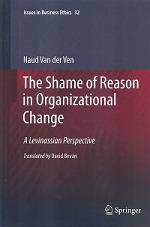One can think of Moses, who gets his first message from the Eternal when in the wilderness He speaks to him from a burning bramble bush. Consequently Moses leads the 40-year groupidentity-forming process of the journey through the desert, and there on Mount Sinai receives the Ten Commandments.
Later in the Bible, after a 40-day trek through the desert without food or water the prophet Elijah eventually reaches Mount Sinai where he is gifted with an appearance of God. He shows Himself in an abstract desert-like manner not in storm or earthquake or fire, but in a gentle breeze. His successor Elisha also passes a while in the desert.
For North-West Europe a completely different identity shaper can be indicated: winter. At least, that’s what Adam Gopnik says in his book Winter. Five windows on the season. According to Gopnik winter played an essential role in the development of the self-consciousness of young European nations. Especially romantics in northern countries such as England, Germany and Russia experienced deep awe for mysterious virginal white plains and let themselves be inspired by fairy tales and heroic sagas which play there.
Gopnik’s attention to the European winters appeals to me, but not because of their romantic nature. I am struck rather by a kinship that the winter has with the desert, which kinship I find in the wintry stillness, in the halt of time when the water freezes and all life is covered with white. That to me is the European equivalent of subtropical deserts. In either situation stillness, if not hardship, occurs by which man can be brought in a mood of repentance. Not without reason white is the color of Yom Kippur.
Those situations have another feature in common, namely that you can long to them: to the severity of dry heat or biting cold, probably because of an intensified internal consciousness that may be caused by them. That desire comes up, at least with me, whenever we live through the type of half-hearted ailing winter we had up to now this year. Then you may be looking for hard ice.
But Western culture is sufficiently steeped in the Bible so as to make the desert, besides the winter, figure as a spontaneous metaphor for inner edge. This is evident when a Dutch author gives his impression of an everyday car-ride from Amsterdam to The Hague: rippling, messy and crowded. “I passed the junction, then Wallmart, Primark. I stood behind a huge truck in a short traffic jam. At the truck’s back I read that I could call if I was not satisfied with the driver. But the man did nothing wrong, though he stood still. A forklift, loaded with pallets, drove on the sidewalk. A cyclist, now faster than the cars, passed us. He had a parcel under his elastic straps, but what was in it? Everyone was busy with something, on their way somewhere. Everywhere houses, offices, megastores, people working behind windows. You know what it is, the poet Mustafa Stitou recently said to me: Holland has no desert.”
Also see Scapegoat

